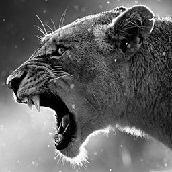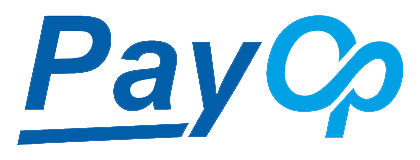How do you save your settings?
Shout-Out
User Tag List
Thread: GameHelper for POE 2
Results 796 to 810 of 911
-
01-19-2025 #796Member

- Reputation
- 1
- Join Date
- Oct 2006
- Posts
- 43
- Thanks G/R
- 0/0
- Trade Feedback
- 0 (0%)
- Mentioned
- 0 Post(s)
- Tagged
- 0 Thread(s)
-
01-19-2025 #797Member

- Reputation
- 7
- Join Date
- Dec 2008
- Posts
- 140
- Thanks G/R
- 4/0
- Trade Feedback
- 2 (100%)
- Mentioned
- 0 Post(s)
- Tagged
- 0 Thread(s)
Setting to click on Sanctum Escape trial pillars
-
01-20-2025 #798
 Member
Member
- Reputation
- 12
- Join Date
- Sep 2009
- Posts
- 160
- Thanks G/R
- 30/12
- Trade Feedback
- 0 (0%)
- Mentioned
- 0 Post(s)
- Tagged
- 0 Thread(s)
Btw completly random tip.
If you love how smooth and polished gamehelper is and you still like exileapi plugins .. USE BOTH if you got a good enough pc.
I can confirm using things like Autopick and Reagent for auto spell use does work with 0 problems if you combine it with gamehelper. Just change the hotkey settings to f11 or something for exileapi and uncheck everything other than the plugins you want to use (Use limited user method always)
But just figured Id let you guys know they both do function together until we get gamehelper plugins in the future that fills that void.
-
Post Thanks / Like - 3 Thanks
-
01-20-2025 #799Member

- Reputation
- 2
- Join Date
- Dec 2024
- Posts
- 4
- Thanks G/R
- 0/1
- Trade Feedback
- 0 (0%)
- Mentioned
- 0 Post(s)
- Tagged
- 0 Thread(s)
is gamehelper going to get a update? I enjoyed game helper more than exilecore.
-
01-20-2025 #800
 ★ Elder ★
★ Elder ★


- Reputation
- 3024
- Join Date
- Jun 2015
- Posts
- 3,326
- Thanks G/R
- 507/2709
- Trade Feedback
- 0 (0%)
- Mentioned
- 92 Post(s)
- Tagged
- 2 Thread(s)
-
Post Thanks / Like - 2 Thanks
-
01-20-2025 #801Member

- Reputation
- 1
- Join Date
- Mar 2020
- Posts
- 2
- Thanks G/R
- 1/0
- Trade Feedback
- 0 (0%)
- Mentioned
- 0 Post(s)
- Tagged
- 0 Thread(s)
Can you share where to look for those plugin/scripts? Thank you.

-
01-20-2025 #802Member

- Reputation
- 1
- Join Date
- Aug 2016
- Posts
- 3
- Thanks G/R
- 0/0
- Trade Feedback
- 0 (0%)
- Mentioned
- 0 Post(s)
- Tagged
- 0 Thread(s)
Loot sometimes is not aligned in the correct position with the map, any fix for this?
-
01-20-2025 #803Member

- Reputation
- 3
- Join Date
- Mar 2020
- Posts
- 28
- Thanks G/R
- 2/2
- Trade Feedback
- 0 (0%)
- Mentioned
- 0 Post(s)
- Tagged
- 0 Thread(s)
-
01-21-2025 #804Active Member


- Reputation
- 66
- Join Date
- Feb 2021
- Posts
- 55
- Thanks G/R
- 41/61
- Trade Feedback
- 0 (0%)
- Mentioned
- 1 Post(s)
- Tagged
- 0 Thread(s)
so after I revisited the function Pattern and this is what I learned:
based on this code
we took as example "GameStates" "41 ?? 48 ?? ?? ?? 48 ?? ?? 33 ?? 48 ?? ?? ^ ?? ?? ?? ?? 0f 85 ?? ?? ?? ??"Code:public struct Pattern { public readonly string Name; public readonly byte[] Data; public readonly bool[] Mask; public readonly int BytesToSkip; private static (byte[], bool[]) ParseArrayOfHexBytes(List<string> arrayOfHexBytes) { List<bool> list = new List<bool>(); List<byte> list2 = new List<byte>(); for (int i = 0; i < arrayOfHexBytes.Count; i++) { string text = arrayOfHexBytes[i]; if (text.StartsWith("?")) { list2.Add(0); list.Add(item: false); } else { list2.Add(byte.Parse(text, NumberStyles.HexNumber)); list.Add(item: true); } } return (list2.ToArray(), list.ToArray()); } public Pattern(string name, string arrayOfHexBytes) { Name = name; List<string> list = arrayOfHexBytes.Split(new string[2] { " ", "," }, StringSplitOptions.RemoveEmptyEntries).ToList(); BytesToSkip = list.FindIndex("^".Equals); (Data, Mask) = ParseArrayOfHexBytes(list.Where((string hex) => hex != "^").ToList()); } public Pattern(string name, string arrayOfHexBytes, int bytesToSkip) { Name = name; BytesToSkip = bytesToSkip; (Data, Mask) = ParseArrayOfHexBytes(arrayOfHexBytes.Split(new string[2] { " ", "," }, StringSplitOptions.RemoveEmptyEntries).ToList()); } public override string ToString() { string text = "Name: " + Name + " Pattern: "; for (int i = 0; i < Data.Length; i++) { text = ((!Mask[i]) ? (text + "?? ") : (text + $"0x{Data[i]:X} ")); } return text + $"BytesToSkip: {BytesToSkip}"; } }
Code:41 56 PUSH R14 48 83 ec 40 SUB RSP,0x40 48 8b f1 MOV RSI,param_1 33 ed XOR EBP,EBP 48 39 2d CMP qword ptr [DAT_7ff695aabe80],RBP fd 61 ac 03 0f 85 6a JNZ LAB_7ff691fe5df3 01 00 00
Code:Before ^: The bytes before ^ (41 ?? 48 ?? ?? ?? 48 ?? ?? 33 ?? 48 ?? ??) are used for pattern matching. The memory scanner looks for these bytes (with wildcards where ?? is present) to identify the start of the signature in memory. After ^: The bytes after ^ (?? ?? ?? ?? 0f 85 ?? ?? ?? ??) are used to calculate the offset for data extraction or processing. This section typically includes dynamic or relative information: For example, 0F 85 is a conditional jump (JNZ) instruction in x86 assembly. Its operand may contain the offset or address of the jump target. These bytes may be parsed to determine specific data locations, offsets, or branch behavior.
Code:BytesToSkip: The constructor identifies the position of ^ and calculates the number of bytes before it. In this case, BytesToSkip is 14 (the position of ^ in the pattern). Data and Mask Arrays: Bytes before ^ are used to create the pattern's data and mask arrays: Data: [0x41, 0x00, 0x48, 0x00, 0x00, 0x00, 0x48, 0x00, 0x00, 0x33, 0x00, 0x48, 0x00, 0x00] Mask: [true, false, true, false, false, false, true, false, false, true, false, true, false, false] Bytes after ^ (?? ?? ?? ?? 0f 85 ?? ?? ?? ??) are ignored during initial matching but are available for further interpretation.
Last edited by XORReverseEngineering; 01-21-2025 at 06:20 AM.
-
Post Thanks / Like - 1 Thanks
 poeking99 (1 members gave Thanks to XORReverseEngineering for this useful post)
poeking99 (1 members gave Thanks to XORReverseEngineering for this useful post)
-
01-21-2025 #805Member

- Reputation
- 1
- Join Date
- Jan 2025
- Posts
- 3
- Thanks G/R
- 1/0
- Trade Feedback
- 0 (0%)
- Mentioned
- 0 Post(s)
- Tagged
- 0 Thread(s)
Do I need to make more settings when using a controller? The map works great when I use the keyboard, but it doesn't show up when I switch to the controller.
-
01-21-2025 #806
 Active Member
Active Member

- Reputation
- 40
- Join Date
- Mar 2017
- Posts
- 97
- Thanks G/R
- 8/32
- Trade Feedback
- 0 (0%)
- Mentioned
- 4 Post(s)
- Tagged
- 0 Thread(s)
@ XORReverseEngineering
I think u should open a new thread for this
there u can get much faster response and maybe more help
GameHelper and ExileCore Dev's are Helping with Stuff that has todo with Offsets
and u should take a look into the poe1 forum there are some good threats that could help a with reversing and offsets
Maybe the Offset for Controller support are not updated until now
and at this point the Data Visualization shows 0 at Minimap and Large Map i think it uses the wrong UIBase Child
for Controller the Minimap and Large Map are at UIRoot -> 1 (UIBase) -> 2 (UIMap) -> 1 LargeMap / 2 MinimapLast edited by darkxell133; 01-21-2025 at 08:55 AM.
-
Post Thanks / Like - 1 Thanks
 XORReverseEngineering (1 members gave Thanks to darkxell133 for this useful post)
XORReverseEngineering (1 members gave Thanks to darkxell133 for this useful post)
-
01-21-2025 #807Private

- Reputation
- 1
- Join Date
- Jan 2024
- Posts
- 13
- Thanks G/R
- 0/0
- Trade Feedback
- 0 (0%)
- Mentioned
- 0 Post(s)
- Tagged
- 0 Thread(s)
Not possible to show breach location when you enter in maps ?
-
01-21-2025 #808
 ★ Elder ★
★ Elder ★


- Reputation
- 3024
- Join Date
- Jun 2015
- Posts
- 3,326
- Thanks G/R
- 507/2709
- Trade Feedback
- 0 (0%)
- Mentioned
- 92 Post(s)
- Tagged
- 2 Thread(s)
If I did not reply to you, it mean the question you are asking is stupid.
-
Post Thanks / Like - 1 Thanks
 XORReverseEngineering (1 members gave Thanks to GameHelper for this useful post)
XORReverseEngineering (1 members gave Thanks to GameHelper for this useful post)
-
01-21-2025 #809
 Active Member
Active Member

- Reputation
- 40
- Join Date
- Mar 2017
- Posts
- 97
- Thanks G/R
- 8/32
- Trade Feedback
- 0 (0%)
- Mentioned
- 4 Post(s)
- Tagged
- 0 Thread(s)
-
01-21-2025 #810Member

- Reputation
- 6
- Join Date
- Dec 2017
- Posts
- 48
- Thanks G/R
- 3/5
- Trade Feedback
- 1 (100%)
- Mentioned
- 0 Post(s)
- Tagged
- 0 Thread(s)
Not sure if this is a bug or a problem on my end, but in sanctum the radar is doing this:
https://imgur.com/a/qk62af1
If I hit tab - the entire screen turns into that orange fun time.
Similar Threads
-
[Trading] my CS:GO beta invite for PoE beta key
By SLOWLLY in forum General Trading Buy Sell TradeReplies: 1Last Post: 08-20-2012, 09:06 AM -
[Trading] trading Molten-wow Premium acc for PoE key
By blackhorn1233 in forum World of Warcraft Buy Sell TradeReplies: 0Last Post: 08-01-2012, 02:37 AM -
[Trading] d3 account for poe beta key
By ffs910 in forum Diablo 3 Buy Sell TradeReplies: 1Last Post: 07-31-2012, 12:15 AM -
[Trading] The Secret World Pre-Order Key for PoE Closed Beta Key
By Duplicity in forum General MMO Buy Sell TradeReplies: 2Last Post: 04-05-2012, 08:12 AM -
[Trading] Firefall beta invites for PoE keys.
By forzakenus in forum General MMO Buy Sell TradeReplies: 0Last Post: 04-04-2012, 01:12 PM












